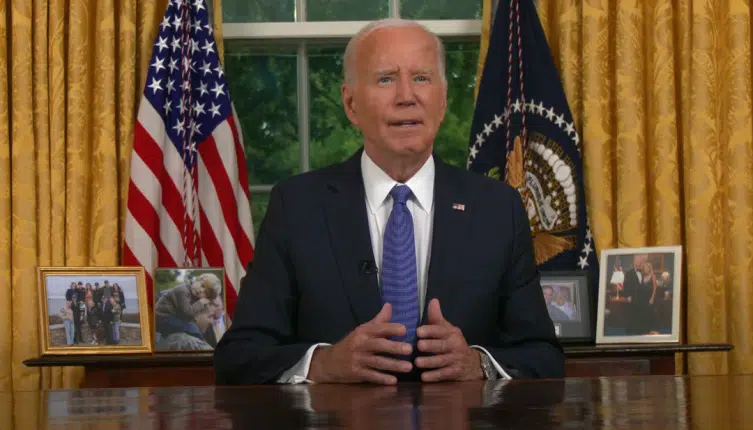On April 19, the Senate completed passage of a two-year reauthorization of Section 702 of the Foreign Intelligence Surveillance Act, which will not come up again until 2026 with either incumbent President Joe Biden or challenger former President Donald Trump deciding how best to work with Congress.
This time around, attempts to include a warrant requirement for queries of the Section 702 database were defeated in the U.S. House of Representatives on a razor thin 212 to 212 margin on April 12.
Although the legislation passed the House, it was with a 273 to 147 margin, very sizeable, but not a veto-proof margin with only 65 percent of those voting being in favor of final passage of the FISA reauthorization. It takes two-thirds of each chamber to override a veto.
Similarly, in the Senate, the FISA reauthorization passed by a vote of 60 to 34. Only 63.8 percent of those voting were in favor. That’s not veto-proof either.
Meaning, if President Joe Biden gave a whit about preventing abuses of FISA — or if a different president were in the Oval Office like Trump — a veto threat might in fact have made a difference in terms of the outcome of the legislation.
But it still takes a President to stand up and use the bully pulpit to articulate an agenda and then to influence legislation by threatening a veto if it doesn’t come out correctly, whether it’s reupping FISA or passing foreign aid for Ukraine, Israel or Taiwan.
In this case, the only pressure from President Biden was to reauthorize Section 702, and so that’s what was done. Despite no help from the President, however, the reform effort to include a warrant requirement failed by just one vote in the House, coming in at 212 to 212.
That was an even better showing after former National Security Agency contractor Edward Snowden’s disclosures of mass surveillance of the American people using FISA in the 2013, when attempted reforms by former U.S. Rep. Justin Amash (R-Mich.) failed by a 205 to 217 margin, the last time any significant reforms were really attempted.
But that was 11 years ago. That in itself is worth considering: With sunset provisions and reauthorizations lasting from two years to four years or longer if Congress so decides, the opportunities for FISA reform might only come up once a decade.
Otherwise, options in between reauthorizations might include prohibitions on the use of funds that can be included in appropriations and budget bills, or attempts to amend FISA directly via other kinds of legislation.
The President could also presumably order reviews and other mitigations by the Attorney General via executive order, since intelligence comes directly under the President’s implied Article II constitutional executive powers, but that approach will almost be certainly limited by the text of the laws Congress has already authorized.
And in the meantime, the FISA system will continue to operate more or less on autopilot by the Justice Department and intelligence agencies with modest presumed oversight by the top-secret Foreign Intelligence Surveillance Court, the briefings given to the President and the House and Senate intelligence committees that may or may not be properly briefed on how the system is being used.
In that sense, all that prevents abuses of mass surveillance against the American people at the moment is faith in those institutions to use the information gleaned from FISA to protect national security, and not to spy on the American people in an unlawful manner. Unfortunately for reformers, the mass surveillance remains authorized, and as a result, barring an intervention by federal courts, the spying is still considered lawful. It will take a president and Congress to change that.
Robert Romano is the Vice President of Public Policy at Americans for Limited Government Foundation.







